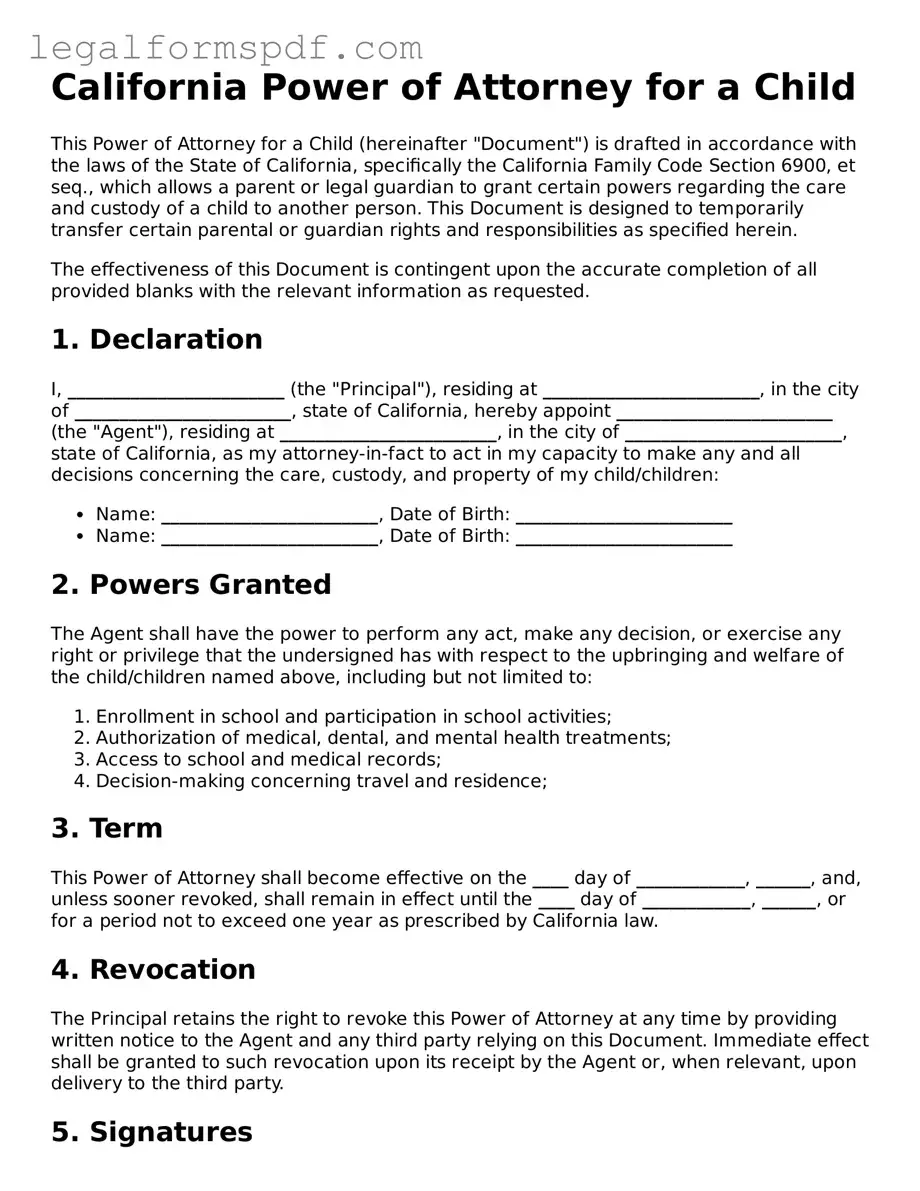California Power of Attorney for a Child
This Power of Attorney for a Child (hereinafter "Document") is drafted in accordance with the laws of the State of California, specifically the California Family Code Section 6900, et seq., which allows a parent or legal guardian to grant certain powers regarding the care and custody of a child to another person. This Document is designed to temporarily transfer certain parental or guardian rights and responsibilities as specified herein.
The effectiveness of this Document is contingent upon the accurate completion of all provided blanks with the relevant information as requested.
1. Declaration
I, ________________________ (the "Principal"), residing at ________________________, in the city of ________________________, state of California, hereby appoint ________________________ (the "Agent"), residing at ________________________, in the city of ________________________, state of California, as my attorney-in-fact to act in my capacity to make any and all decisions concerning the care, custody, and property of my child/children:
- Name: ________________________, Date of Birth: ________________________
- Name: ________________________, Date of Birth: ________________________
2. Powers Granted
The Agent shall have the power to perform any act, make any decision, or exercise any right or privilege that the undersigned has with respect to the upbringing and welfare of the child/children named above, including but not limited to:
- Enrollment in school and participation in school activities;
- Authorization of medical, dental, and mental health treatments;
- Access to school and medical records;
- Decision-making concerning travel and residence;
3. Term
This Power of Attorney shall become effective on the ____ day of ____________, ______, and, unless sooner revoked, shall remain in effect until the ____ day of ____________, ______, or for a period not to exceed one year as prescribed by California law.
4. Revocation
The Principal retains the right to revoke this Power of Attorney at any time by providing written notice to the Agent and any third party relying on this Document. Immediate effect shall be granted to such revocation upon its receipt by the Agent or, when relevant, upon delivery to the third party.
5. Signatures
This Document must be signed by the Principal in the presence of two witnesses, who must also sign, OR a notary public as required by California law.
Principal's Signature: ________________________, Date: ________________________
Witness Signature: ________________________, Date: ________________________
Witness Signature: ________________________, Date: ________________________
OR
Notary Public:
(Seal and Signature of Notary)
State of California, County of ________________________
This document was acknowledged before me on ________________________ by ________________________, known to me (or proved to me on the oath of ________________________) to be the person who executed it.
